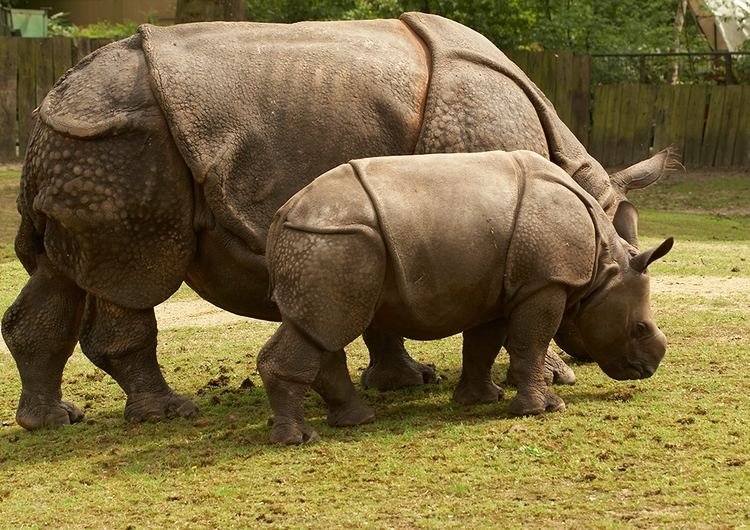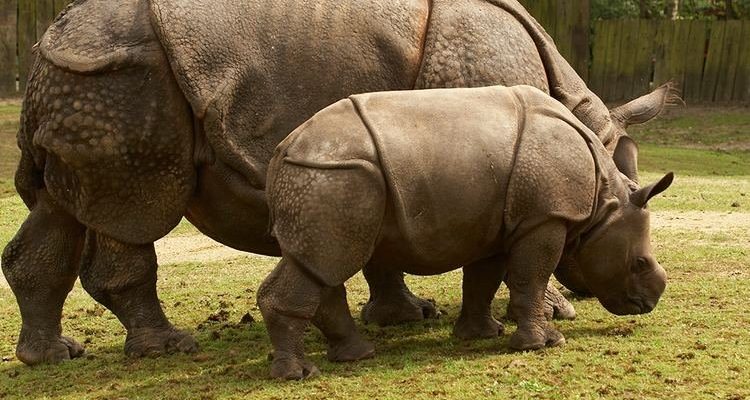
When you think of the Javan rhinoceros, you might picture a rugged beast wandering through the dense jungles of Indonesia. This incredible creature is one of the rarest large mammals on Earth, but it’s not the only fascinating animal in the rhino family. Just like how you can find different flavors of ice cream at a parlor, there are various animals that share similarities with the Javan rhino, each with its own unique twist. Understanding these animals can give you a deeper appreciation for biodiversity and conservation efforts.
So, what makes the Javan rhino special? Unlike its more famous cousin, the African white rhino, the Javan rhino is smaller and has a distinctive single horn. With fewer than 80 individuals left in the wild, they represent a dramatic conservation story. But let’s dive into some animals that resemble the Javan rhinoceros, and I’ll share how to distinguish each one. Grab a cup of coffee, and let’s explore!
1. Indian Rhinoceros
The Indian rhinoceros is perhaps the most recognizable relative of the Javan rhino. Found primarily in northeastern India and Nepal, this majestic creature boasts a prominent single horn similar to its Javan cousin. However, the Indian rhino is much larger, weighing up to 2,200 kg (over 4,800 pounds)!
What’s striking about the Indian rhino is its thick, wrinkled skin, which looks like armor. This unique texture sets it apart visually from the smoother skin of the Javan rhino. They also tend to live in open grasslands and forests, whereas Javan rhinos prefer dense jungles.
Another key difference lies in their social behavior. Indian rhinoceroses are sometimes seen in larger groups, whereas Javan rhinos tend to be more solitary. If you spot a rhino in a field, check for those distinctive skin folds and size to identify it as an Indian rhino.
2. White Rhinoceros
The white rhinoceros is the largest of all rhino species, easily dwarfing the Javan rhino. While these two share a similar horn structure, the white rhino is known for its broad mouth, adapted for grazing on grass.
In terms of habitat, white rhinos are typically found in savannas and grasslands in southern Africa. They are social animals, often grazing in small groups. When studying their behaviors, you might notice that they are more outgoing compared to the reclusive nature of the Javan rhino.
Size is a significant clue! A white rhino can weigh up to 2,300 kg (5,000 pounds), whereas a Javan rhino is much smaller. So, if you’re trying to tell them apart, remember: size does matter here!
3. Black Rhinoceros
The black rhinoceros is another fascinating relative. Unlike the white rhino, the black rhino has a more pointed, hooked lip, adapted for browsing leaves from shrubs and trees. This makes it different from the other rhinos that either graze or consume tougher vegetation.
They’re typically smaller than white rhinos but are a bit stockier than Javan rhinos with a more aggressive demeanor. Black rhinos also have a more varied habitat, ranging from savannas to deserts, which adds to their adaptability. When you compare them, take note of the lip shape and their different feeding habits.
4. Sumatran Rhinoceros
Next up is the Sumatran rhinoceros, the smallest living rhinoceros. These critters are more closely related to the Javan rhino than any other rhino species. They are covered in long hair, giving them a unique appearance, almost like a shaggy dog!
Sumatran rhinos are also solitary and prefer dense, tropical rainforests. They’re the most endangered of all rhino species, similar to the Javan rhino. If you ever come across one, the hairiness and smaller size are clear indicators that you’re looking at a Sumatran rhino rather than a Javan.
5. African Forest Elephant
If you’re exploring the forests where the Javan rhino lives, you might also encounter the African forest elephant. While not a rhino, this elephant shares the same habitat and exhibits some similar traits.
Both animals have grayish skin and inhabit dense forests, but that’s where the similarities end. Forest elephants are smaller than their savanna relatives and sport smaller, rounder tusks. Plus, their trunks are more dexterous, allowing them to grab leaves and branches efficiently. So, while they may look somewhat similar at a glance, their size and tusk shape will tell you who’s who.
6. Tapirs
Now let’s shift gears to tapirs. These charming animals are found in Central and South America as well as Southeast Asia. Like the Javan rhinoceros, tapirs have a similar body shape and often wade through wetlands.
The key difference, however, lies in their long snouts, which resemble a small trunk. Tapirs are generally smaller and have a more endearing appearance, often compared to a mix between a pig and an elephant. If you see a round creature munching on leaves near water, remember to look for that unusual snout to identify it as a tapir rather than a rhino.
7. Hippopotamus
The hippopotamus might surprise you as a distant cousin of the rhino. Both belong to a group called *hippos*, and they share similar environments in Africa and Asia. Though they don’t look alike, they do have similar body shapes and sizes.
Hippos are known for their large mouths and jowls, which set them apart from rhinoceroses. Plus, they spend a lot of time in the water, which is a behavior not typically seen in rhinos, especially the Javan species. If you see a large, bulky animal lounging in a river, you can bet it’s a hippo rather than a rhino!
8. Gaur
The gaur, or Indian bison, is another large mammal you might encounter in the jungles of Southeast Asia. While they are not related to the Javan rhino, they do have a similar robust build.
Gaur are darker in color, with a distinctive hump on their back and long horns. They live in herds and enjoy the same habitats as Javan rhinos. To distinguish them, look for the characteristic horn shape and social behavior of gaurs compared to the solitary nature of Javan rhinos.
9. Bornean Pygmy Elephant
Found in Malaysia and Indonesia, the Bornean pygmy elephant is another interesting animal to consider. While they are a subspecies of the Asian elephant, their smaller size and distinct features might evoke a similar curiosity.
With their rounded ears and cute, stubby stature, they provide a stark contrast to the massive size of the Javan rhino. Though they share the same habitat, pygmy elephants have longer trunks and are social animals, often seen in family groups. If you’re in Borneo and see an adorable little elephant, you can safely say it’s not a rhino.
10. Capybara
Finally, let’s look at the capybara, the largest rodent in the world! These adorable creatures are nothing like a rhino, but they do share the same wetland habitats that Javan rhinos inhabit.
Capybaras are social animals, often found in groups near rivers and ponds. Their smaller size and long, barrel-shaped body make them easy to differentiate. If you spot one lounging near water, you’ll know it’s not a rhino, but it certainly adds to the diverse ecosystem!
In conclusion, while the Javan rhinoceros is a unique and endangered species, many other animals share its habitat and exhibit similar characteristics. By understanding these animals, you can appreciate the intricate tapestry of life that exists in the forests and grasslands they call home. Whether it’s the hefty Indian rhino or the charming capybara, each animal contributes to our planet’s biodiversity in its own special way. Keep exploring and learning, and you’ll find beauty in every corner of nature!

